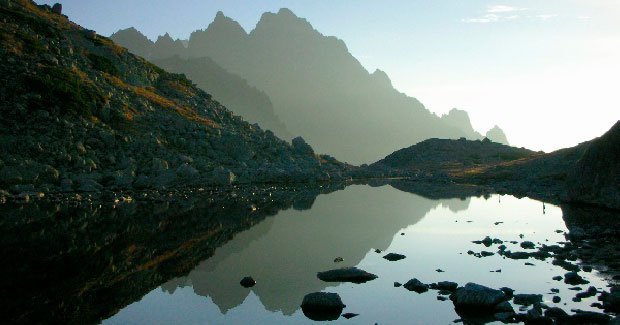Carpathian Mountains: King of the Carpathians

Jozef Truban never planned to make a complete traverse of one of Europe’s largest mountain ranges alone. Until three weeks before his departure last July, the 39-year-old civil engineer from Woolgoolga, NSW, thought he was undertaking the arduous journey with two mountaineering friends. Then one crashed his mountain bike and broke his collarbone, and the other was offered a job he’d been chasing for years. The easygoing Aussie took it all in his stride. “I knew I would go anyway,” he says. “I was already walking in my mind.”
Without a second thought, he ditched his tent, stove and cooking utensils and packed a lightweight sleeping bag and mat, a tarp and one change of clothes.
The rest of the game plan remained the same: travel along the main ridge of the Carpathians, covering the rugged ranges by foot and the rest by mountain bike.
The Carpathians are a chain of mountains forming an arc of roughly 1500 km from Jozef’s birth country of Czechoslovakia (now Slovakia and the Czech Republic) through Poland, Ukraine and Romania. The highest summits within the chain belong to the Tatra Mountains, on the border of Poland and Slovakia, where peaks reach in excess of 2600 m, followed by the Transylvanian Alps, which attain heights of more than 2500 m.
When Jozef left Bratislava in Slovakia on 9 July, he reckoned on a 2000 km journey. Maps of Romania were hard to come by, however, so the final leg of the trip remained a mystery until Jozef stepped across the border. “But I thought, you know, mountains are all the same: they go up, and they go down again,” he says. “I didn’t expect it to be as long as it was. It was much harder than I’d thought.”
Although he’d underestimated the length of the trip, Jozef travelled the distance remarkably quickly, covering up to 180 km a day on his bike and 40 km on foot. In total, he rode 2600 km and walked 500 km. “I surprised myself – how far I could go and for how long,” he says.
During the two-month journey, Jozef spent only a handful of nights in the villages through which he travelled. The rest of the time he found shelter in huts on the track, beneath his tarp or a rocky overhang, or in warm, dry animal lairs beneath shrubs and bushes. Breakfast on the road consisted of muesli with dried fruit and nuts, lunch was lollies and dried fruit, and dinner, dense bread with cheese and salami. Jozef supplemented his diet with multi-vitamins and magnesium tablets. “And berries – lots and lots of berries,” he says. “Blueberries,
raspberries, strawberries… there’s nothing like eating freshly picked fruit on the track. That was it until I reached a village; then I’d have a big bowl of warm soup.”
The challenges were as hard and steep as mountain peaks. Jozef fell 8 m in the technically difficult Tatras, which he climbed with Slovakian friend Peter Tomko. He contracted bronchitis in Romania, after riding for days through icy rain and wind in almost no visibility. “I was riding past beautiful mountains and villages and didn’t see any of it,” he says.
He pushed on – through heatwaves, rain, hail and snow, sickness and loneliness – and discovered that the greatest pleasures could be found in the simplest things. “My happiest moments were when the sun came out after the rain,” he says. “Or when I found a nice, dry shelter after being wet all day, or when I ate nice hot soup after feeding on dry oats for days.
“Now, I really value things like shelter – a roof above my head. Being out in the cold with no shelter is terrible. Most people don’t know how lucky they are. And I really value company. When you see something good – something truly beautiful – it’s good to share it because it doubles the enjoyment of it. It’s the same with bad things, except when you share them they’re halved.”
Source: Australian Geographic Jul – Sep 2008

